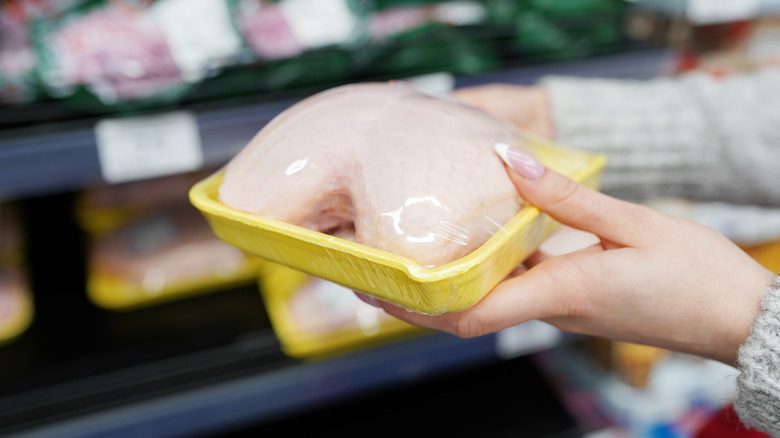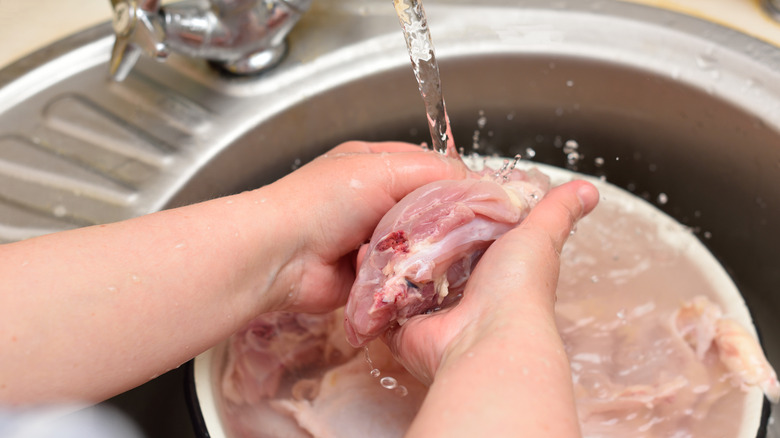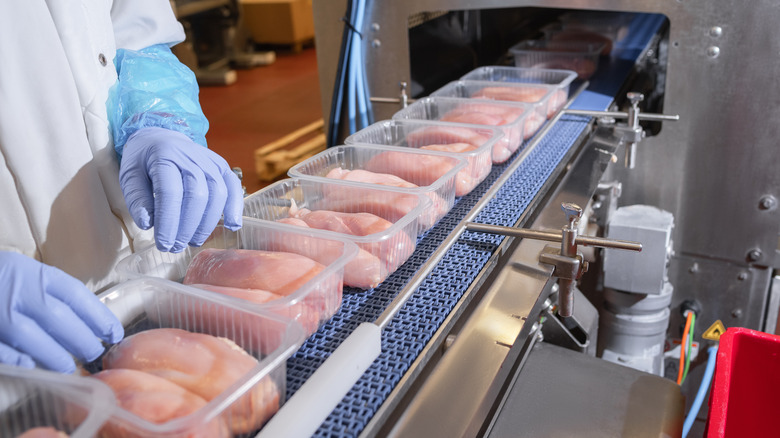Why It's Always A Mistake To Rinse Raw Chicken
You're craving garlic butter chicken thighs for dinner, so you go to the store and pick up some raw chicken. Before you go home and wash those chicken thighs in the sink, stop and heed this warning.
The world is split on washing chicken. Some of people have grown up watching their parents rinse raw chicken in the sink and pat it dry. For them, even the thought of not washing it doesn't sit right. But in reality, there is no need to wash raw chicken. In fact, you're doing more harm than good when you wash poultry.
The U.S. Department of Agriculture (USDA) is very clear on the matter and asserts that people put themselves and their families at risk of foodborne illness by washing raw poultry. According to a study in the journal Vet World, Salmonella on raw poultry products causes about 93 million cases of gastroenteritis and 155,000 deaths globally every year. So, how does cleaning something cause illness? Here's what to know.
Spread of bacteria
Washing raw chicken can spread harmful bacteria, like Salmonella and Campylobacter, to other surfaces in your kitchen by splashing water containing bacteria. These bacteria can contaminate countertops, sinks, utensils, and your hands, increasing the risk of foodborne illness if they come into contact with other foods.
Cross-contamination can occur when bacteria from raw chicken are transferred to ready-to-eat foods, such as fruits, vegetables, or cooked dishes. This can happen through contact with contaminated surfaces, utensils, or hands.
The USDA warns to prepare foods that will not be cooked, like salads and fruits, before handling and prepping raw meat and poultry. They also advise thoroughly sanitizing all surfaces that have potentially touched or been contaminated by raw meat, poultry, or their juices. Also, remember to wash your hands immediately after handling raw meat by scrubbing on soap for a full 20 seconds – no less. Anyone can get food poisoning, but young children, older people, and those with weaker immune systems are particularly at risk,so it's important to follow best practices every time you cook.
Raw chicken is cleaned when processed
Worry not, packaged raw poultry is cleaned and inspected heavily when it is processed. Cooking raw chicken to the appropriate internal temperature is the most effective way to kill any harmful bacteria present, making washing unnecessary for food safety. The USDA recommends cooking chicken to an internal temperature of 165 degrees Fahrenheit to ensure that any potential pathogens are destroyed. Of course, don't forget that this is also the best temperature for cooking the juiciest chicken. Use a meat thermometer to make sure your chicken is cooked all the way through.
Drexel University advises that raw poultry may have a coating of water and protein, which is used during processing, but this gets cooked off. If you must, you can remove it with a clean paper towel and then wash your hands.
With the step of washing raw chicken out of the way, you'll save time in the kitchen. You can use this extra time to try out more time-consuming chicken recipes for surefire show stoppers at dinner.


